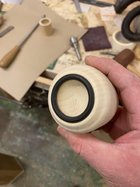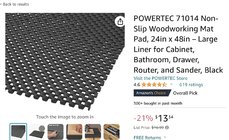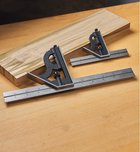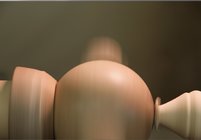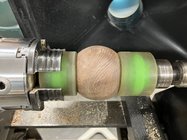I have turned 30 or more spheres in the last couple of weeks for a coat rack, and just to turn them and use up some scraps. I keep thinking back to Allan Batty and him commenting about turning billiard balls out of elephant ivory. It was a couple of years project, but final turning was with a jam chuck. In trying to get a 'nearly perfect' off the tool sphere, I am coming close. I did discover that live centers can be highly variable for any kind of accuracy, and ended up using an old Nova Center where you could knock the tip out and use a new one. I was able to chuck it up in my chuck, and rough turn a cup chuck for it, but that was still off a bit. I put the head of a cordless drill on the live center, while it was in the tailstock, to spin it while I trued up the cup with a NRS. That got me very close, but not quite to the point where I couldn't feel ridges that would have to be sanded off. So, I need to find some sort of 'adjustable' jam chuck to finish off all of my spheres, and maybe get a tooled final cut where I can find no ridges. Anyone have any suggestions? I am thinking extended chuck jaws with a softer plastic that will flex for a secure grip that won't leave marks. I don't particularly want to have 50 different jam chucks, and none of my spheres are the same size, even if I start out with the same sized blanks.... Maybe some of the white plastic and turn it true? There has to be some sort of solution. Maybe one of the chucks they use for bowls that are actually round, and you screw/twist it till you get a secure grip? Is that a Longworth chuck?
robo hippy
robo hippy

